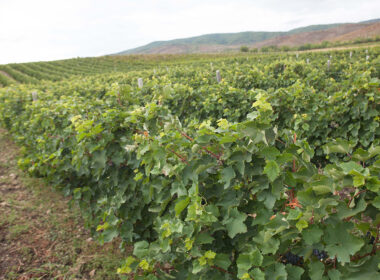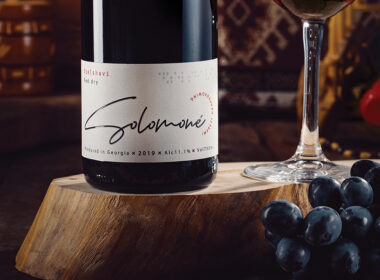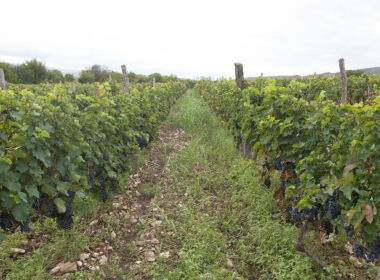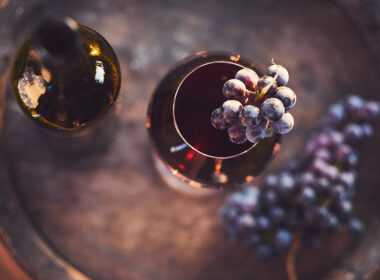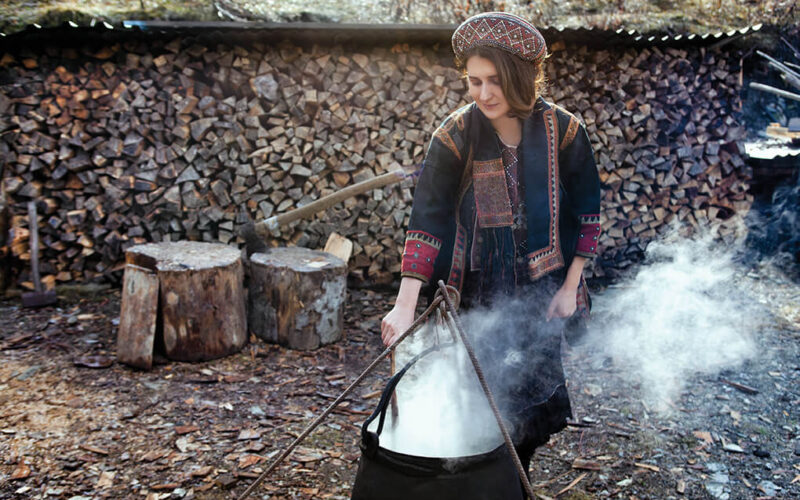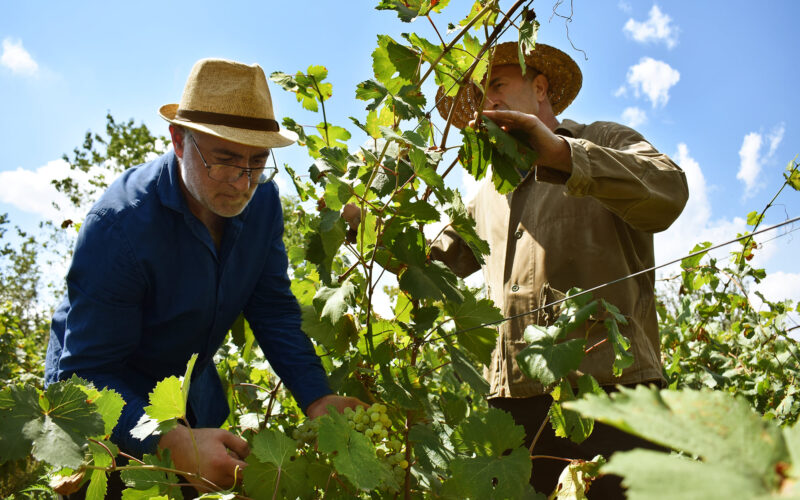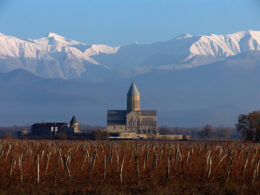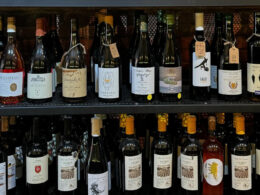IRMA CHANTURIA | Director of “Wine Laboratory”: Georgia has a long history of sparkling wine production. This tradition, or even phenomenon, began during Ivane Bagrationi of Mukhrani, and gained significant popularity during the Soviet Era, with the construction of “Tbilisi Factory of Champagne”. The factory conducted experiments, implemented production processes, and exported its production, introducing Georgian sparkling wines (called “champagne” at the time) to the world. Today, the factory belongs to “Bagrationi 1882”, one of the oldest and most prominent producers of sparkling wine.
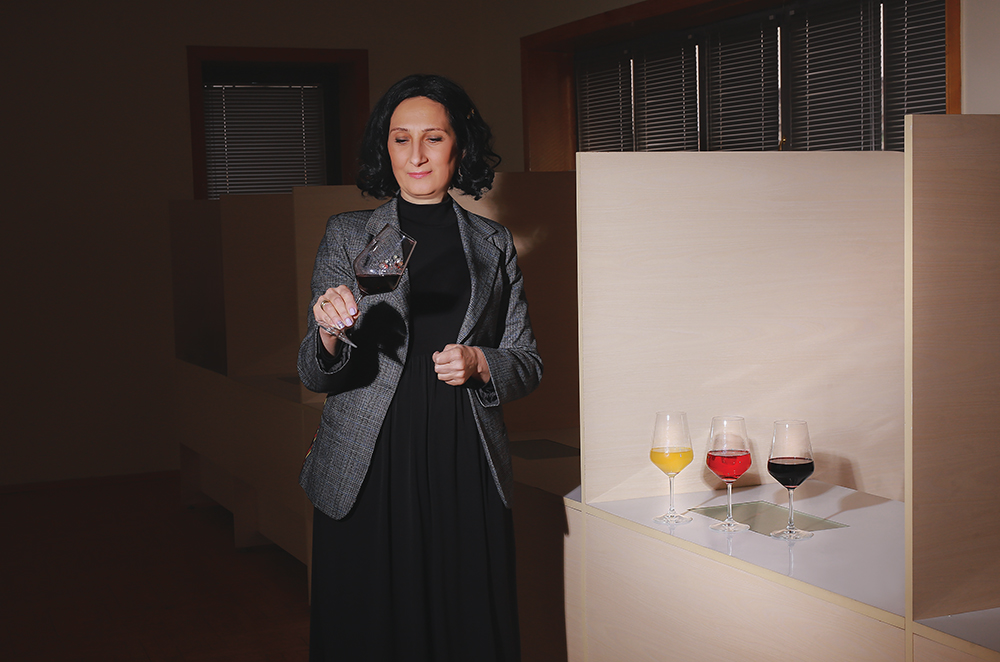
Giorgi Samanishvili | Production director of “Bagrationi 1882”: The factory was built during 1936-38, to increase the production volumes of sparkling wine. During the same period, an association was formed that united all of the specialized producers of sparkling wine. The association supplied the factory with production materials, such as Tsistka from Imereti, Chinuri, and Goruli Mtsvane from Kartli, and a surprisingly low volume of Mtsvane from Kakheti, even though this grape was largely used to produce sparkling wine during the 19th century. Thankfully, after a break, this variety is back in use in sparkling wine production. The factory also received foreign varieties: Chardonnay and Aligoté. However, Tsitska, especially the one grown in the Kharagauli region, was and is considered the best variety for sparkling wine. The factory produced “champaign” using the Charmat method, 20 million bottles of which were exported outside Georgia starting in the ‘80s. Additionally, it produced more than 1 million bottles of sparkling wine using the traditional method, so up to 3 million bottles were always stored to age in the 2-story basement of the factory.
The wine production facility restarted its production in 2000, subsequently renaming itself to “Bagrationi 1882”. Today, it is a private company that fortunately built its Tsitska, Goruli Mtsvane, and Chinuri vineyards in Kartli and Imereti. We do not own Mtsvane vineyards, so we buy the grape in Kakheti. We are mostly oriented towards using traditional varieties. Despite already being the largest producer of sparkling wines, we are planning to extend our production and to double it (at the very least) in the coming years.
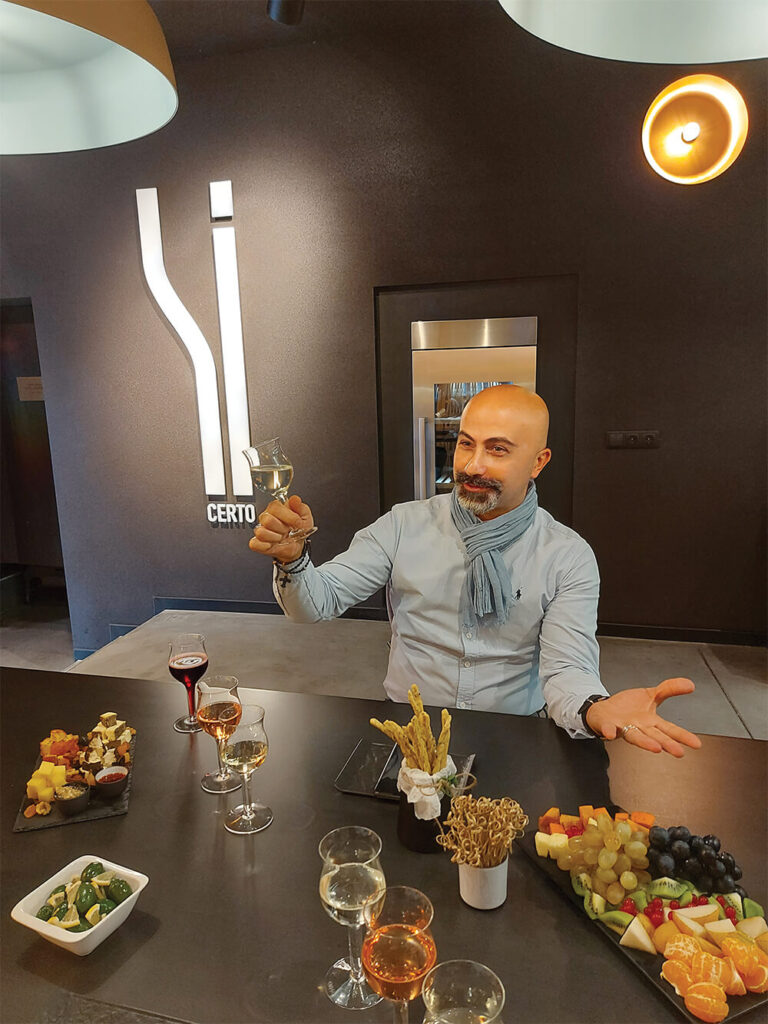
I think all sparkling wine producers must agree on a common development strategy. Many countries, unfortunately, are not even familiar with this wine. They do not expect sparkling wines from Georgia, because we have built a reputation with our traditional wines. But I think there is a place for Georgian sparkling wine – and the best way to reach it is through the varieties I mentioned above. Regions and varieties should get the spotlight. Let’s take Tsitska, for example – since it is different in every region, it can be categorized by region, be it Kharagauli, Zestafoni, or Baghdati. Or take another example – Atenuri – one of the oldest appellations of origin, mentioned in our history. Vakhushti Batonishvili describes the process of making sparkling wine from Atenuri grape, and the technology is the same as in the rest of the world, like the Champaign region in France. So, making sparkling wine is in our tradition as well. There is a lot of information in the records of foreign winemakers that describe how sparkling wines were made in different regions of Georgia, such as Imereti, Abkhazia, Kakheti. This should be our focus when promoting Georgian sparkling wines and making the label our own.
Irma Chanturia: It is also crucial to expand the sales markets because it is undesirable to store sparkling wines. Grape harvest, bottling, and sales should be a continuous process because the materials used in our sparkling wines should not be aged and should be sold quickly.
We also have to talk about Atenuri: Soso Vanishvili is the only winemaker that preserved the tradition, with a magnificent winery located in the microzone where this sparkling wine should be produced. He constantly strives to improve quality, conducting experiments and gathering recommendations. And while he also successfully makes still wine, Atenuri is his specialty. “Chateau Ateni” is largely responsible for preserving this appellation of origin, so this is not only a private business but a way to protect it.
Soso Vanishvili: We are still a small winery. We produce 5000 bottles a year, out of which 2000 are sparkling and the rest is still wine. I think soon we will only concentrate on sparkling wines and Pet-Nats. Ateni is a sparkling wine microzone and its potential should be fully realized. Our plans include the expansion and addition of new vineyards. We recently bought a land plot next to our house, where we want to build a new, bigger winery that will solely be dedicated to sparkling wine production. Still wines will be produced in the old one. As you know, sparkling wine production requires more space, which we lack in the old winery.
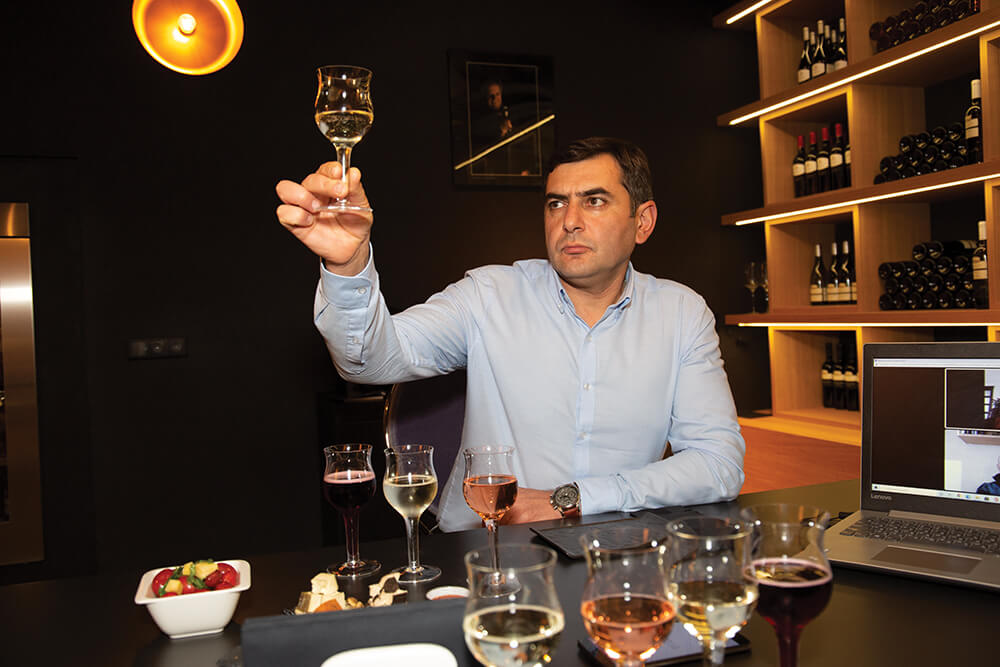
The Atenuri sparkling wine turned out very interesting after we aged it on lees. So did “Elisabeth”, made from Goruli Mtsvane and Tavkveri. I am planning to blend Chinuri and Buza with Goruli Mtsvane. Buza is a forgotten grape variety. We are waiting for its harvest.
Ateni has been producing sparkling wines since the 11th century. It was produced in qvevri, though. Atenuri has been historically described as “Effervescent” and “Royal Wine”.
Giorgi Samanishvili: All traditional countries had effervescent, sparkling wines. France started producing Champagne in the 17th century, but before that, they probably had the same sparkling, effervescent, bubbly wines, much like Ateni, Racha, or any other mountainous region. The French managed to refine the method and advance the technology, bottling, and transportation. The refined method was then “returned” to us. Nevertheless, sparkling, effervescent (even “rebellious” in ancient sources) wine was already present in our culture.
Irma Chanturia: today, it is very popular to revive forgotten grape varieties. Small wineries have the flexibility to grow these varieties in their backyards and experiment with the harvest. It is such important work.
Soso Vanishvili: We also want to grow Tetri Budeshuri. We acquired 100 saplings and planted them. I know that this variety is one of the best for sparkling wine.
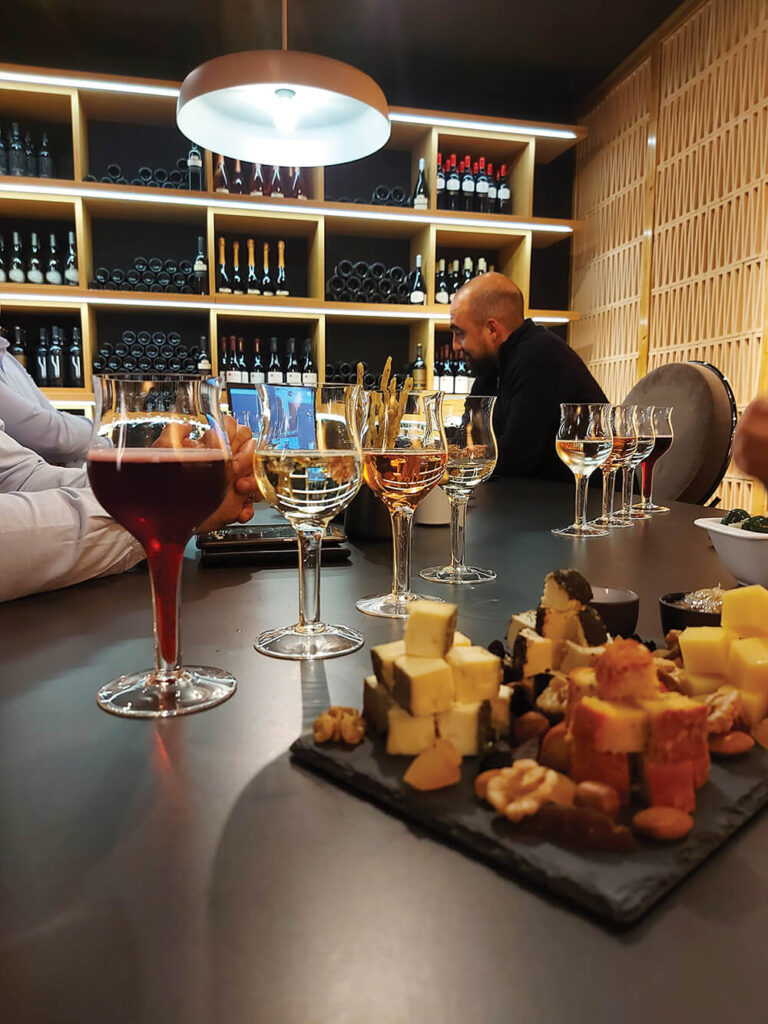
Giorgi Samanishvili: Traditionally, Tetri Budeshuri, as well as Chinuri and Goruli Mtsvane were considered the best varieties for sparkling wine. Tetri Budeshuri is a very interesting variety that will enrich Chinuri and Gori Mtsvane coupage.
I also want to address the notion that varieties from Kakheti are unsuitable for sparkling wine. Rkatsiteli, Mtsvane, Kisi, and other varieties are very interesting for sparkling or mild sparkling wines. It all depends on the place they were grown, the method of making, and development. So, we have a wide choice of varieties and regions we could experiment with, presenting our best results to the market.
Irma Chanturia: Another big player on the market is “Badagoni”, which made a statement in 2014 by introducing their sparkling wine production. They have a modern, large-scale production line that produces high-quality wines.
Marika Giorgadze | General director of “Badagoni”: Before starting sparkling wine production, we researched various grape varieties with enologist Dr. Donato Lanati and the international applied research center Enosis Meraviglia. We actively work with Jighaura SRC and annually send various grape samples to the laboratory, where they provide full information about the potential of the grape, what to use it for and how to realize its full potential in wine without much intervention. Based on this research we started producing brut and rosé in 2014, adding semi-dry, semi-sweet sparkling wines in 2015, along with sparkling wine produced from Saperavi. We are the first company in recent history that started producing sparkling wine from this variety, as well as from Kakhuri Mtsvane (Dr. Lanati especially admires one grown in the Akhmeta zone). Today, we produce 5 types of sparkling wines using the Charmat method, while starting to work on samples using bottle aging.
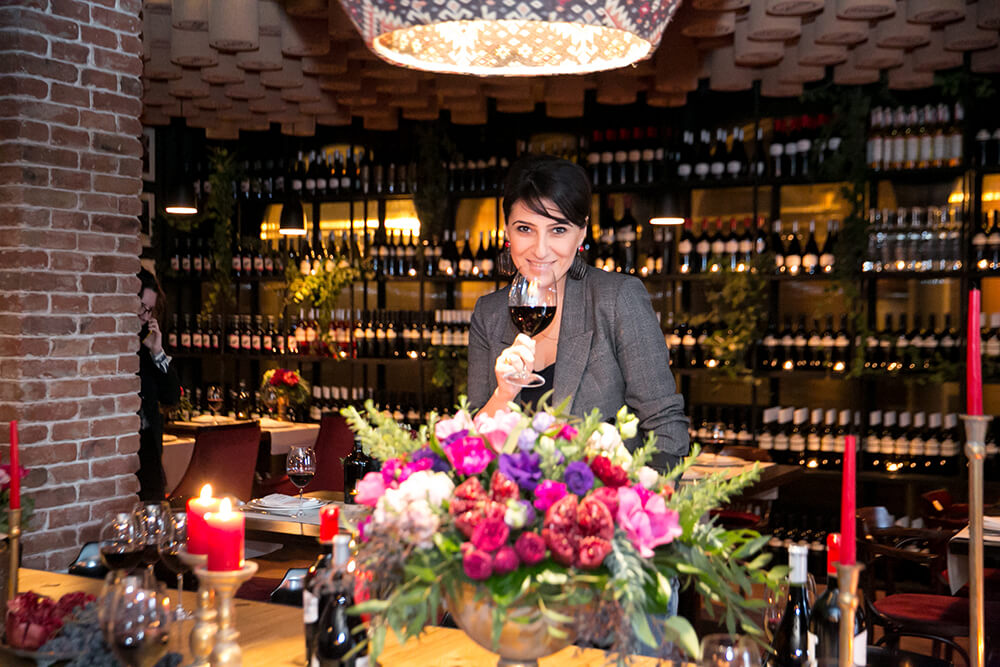
Irma Chanturia: “Chateau Buera” has also introduced its sparkling wines. They have unveiled their potential before our eyes and have already gained popularity.
Vakho Khutsaidze | Chief winemaker at “Chateau Buera”: We annually produce 40,000 bottles at “Chateau Buera”. Sparkling wine, which we started producing in 2019, only occupies a small percentage of the whole production. We started with 1250 bottles and reached 4000 this year. We brought Tsitska grape from Meore Sviri village in Zestaponi region in 2019. In 2020, we made a Tsitska (70%) and Chinuri (30%) cépage that turned out very interesting. However, this year, we are back to Tsistka, because it’s challenging to coordinate the harvest times for those two varieties.
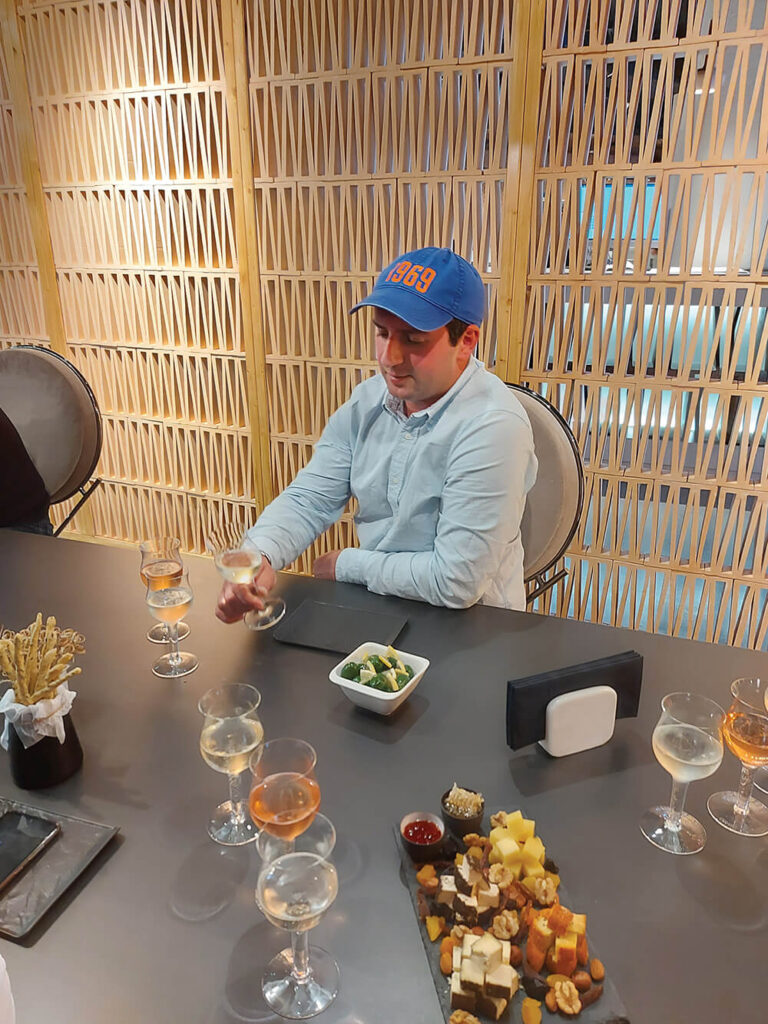
“Chateau Buera” winery was established in 2018 with the sole purpose to produce high-quality, aged wines. It has been a couple of months since we entered the market. Our still wine is aged using various methods – first in qvevri, then in oak barrels, and finally in bottles. This process takes up to 2-3 years, so we just brought our 2018 vintage to the retail market. A large share of our wines is sold on our premises (“Chateau Buera” and “Lopota” resorts), but we do not solely concentrate on a local consumer. In November 2021, we received an offer to export our wines. As for sparkling wines – we only sell them on our premises, due to small quantities of production. Sparkling wine is my first independent endeavor as a chief winemaker at “Chateau Buera” and it is very pleasant to know it already received positive acclaim.
Georgian Pet-Nats
Irma Chanturia: We have to talk about Pet-Nats and the technology of their production with Gogi Dakishvili. Dakishvili Winery is synonymous with great quality. Mr. Dakishvili, what is your secret, how do you manage to produce traditional qvevri wines along with such interesting Pet-Nats?
Gogi Dakishvli | Dakishvili Winery: We made our first Pet-Nat in 2018. It was intended for personal consumption, so I would call it an experiment. However, we liked the result so much that we decided to produce it, introducing our 2019 vintage to the market. Pet-Nats are generally considered a predecessor to Champaign and sparkling wine. French even call it “méthode Ancestral” (“an ancient method” in French). Making Pet-Nat is very easy: the new wine is poured into bottles, where the alcoholic fermentation ends and natural fizz occurs. The quality and selection of grapes determine the tones in the final product. Our secret is high-quality grape and control of the fermentation process. The temperature during fermentation is quite low and when sugars are at 2.2-2.4%, that’s when we bottle it.
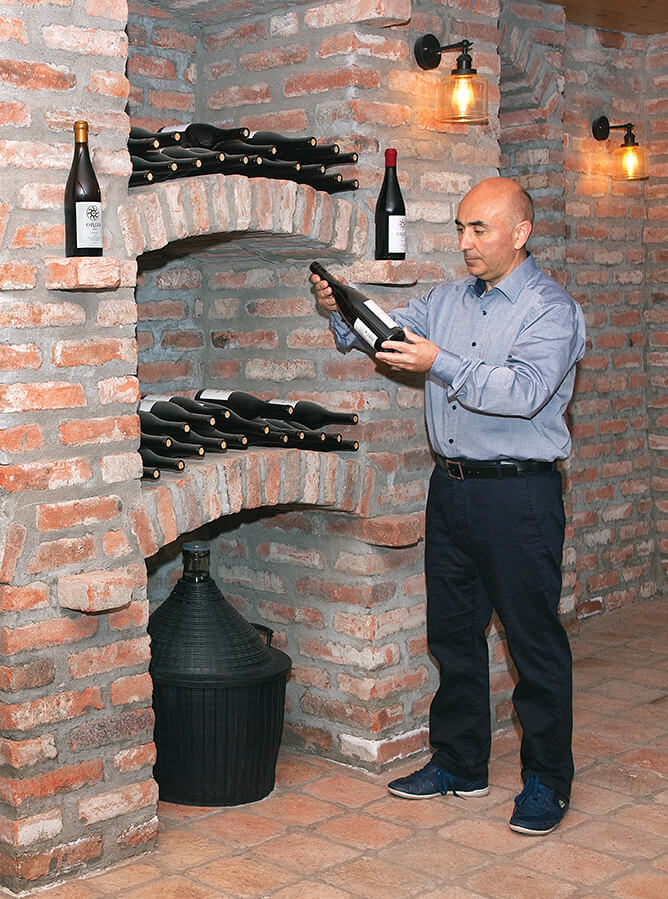
Today, Pet-Nat is a trendy beverage in the world. At EUR 20-30 per bottle, it is also quite expensive. The price in Georgia is lower, due to a number of reasons. We have a wonderful word in Georgian – “Matchari” (“new wine” in Georgian). We used it on our label as well. I’d like to see more producers use this word because long before the term “Pet-Nat” was coined, we used our term – “Matchari”. It deserves appreciation and acceptance from the world. Georgia has endless opportunities to produce this wine and the biggest one of all is the diversity of our grape varieties. It’s great to see different producers making Pet-Nats. The ones I’ve tried are of great quality, so I think Georgia has a future in this aspect.
The disgorging of Pet-Nat is entirely up to the producer. It can be done so the final product is as refined and clear as the classical wine, or not. It’s a producer’s choice.
Pet-Nats are usually considered a low-alcoholic beverage (11-12%), however, this should not be taken as a rule. I am more than fine with high alcohol Pet-Nat, for instance, our Kisi, with its distinct, exotic aroma of tropical fruit and high alcohol content of 13.5%. It is good for gastronomic purposes and can serve as a good aperitif. I hope winemakers do not only concentrate on making 11% alcohol Pet-Nats because they can be made with riper grapes.
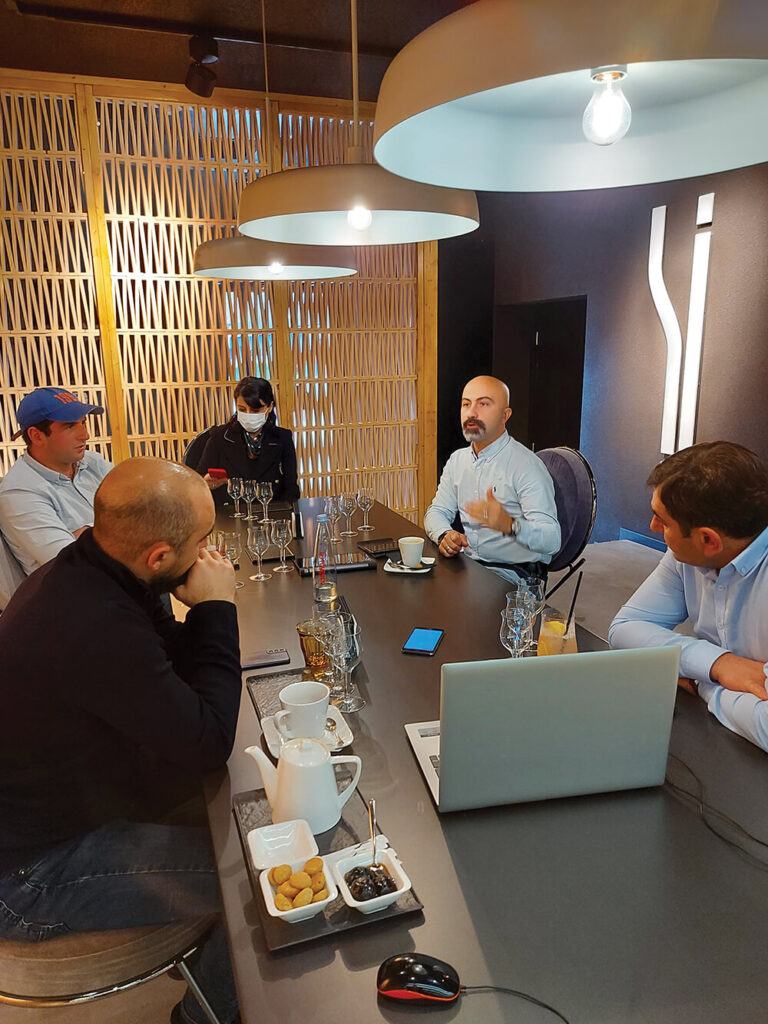
Irma Chanturia: Indeed, why not?! Ripe grapes give us high-alcohol bruts with a piquant taste.
Giorgi Samanishvili: Pet-Nats work especially well in the case of small and medium-sized wineries. They are an authentic and different segment. As Gogi Dakishvili mentioned, the ripeness and the wine itself are very well observed in Pet-Nats. They carry Georgian character and allow us to show varietal characteristics. Kisi is a great example of such a Pet-Nat.
The definition of Pet-Nat is absent in the legislature of most countries, including Georgia. We do use this term, but it would be great to start using “Matchari”, to make the beverage more Georgian. With the right marketing, we can show the diversity and potential of Georgian grape varieties and excite international consumers.
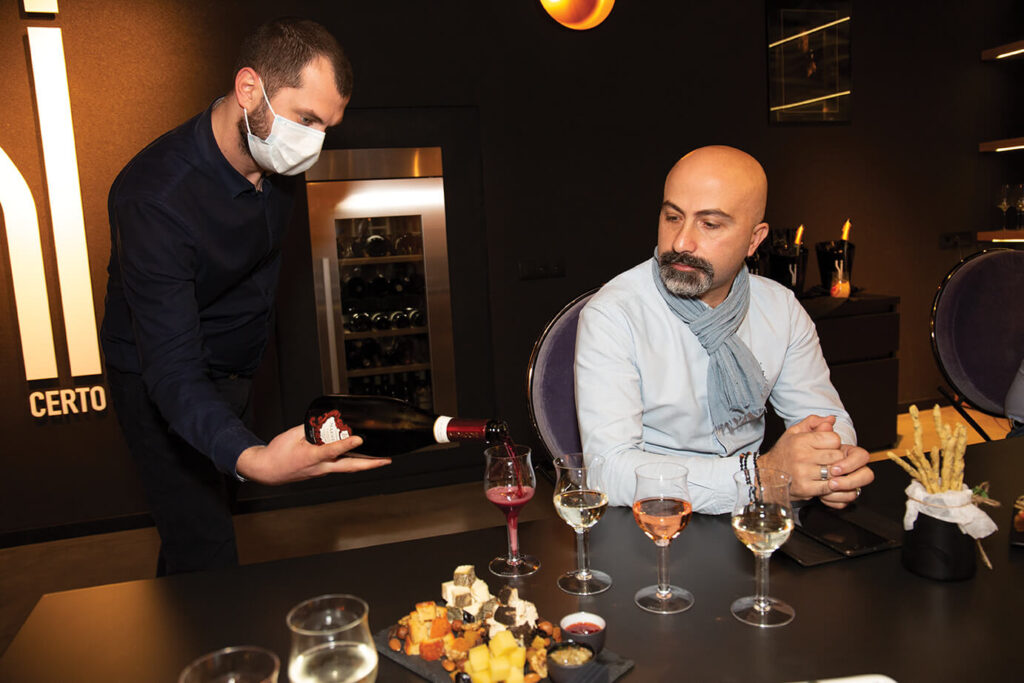
Irma Chanturia: today, there are several issues with Pet-Nat production in small wineries. So, producers that want to start working in this direction should acquire more knowledge, conduct more experiments, listen to experienced professionals and familiarize themselves with regulations. They should know what they are doing in advance, both visually and in terms of quality. A lot of work is to be done with small wineries so that they are in line with local as well as international regulations.
Gogi Dakishvili: this is the only way for quality to improve. There should be leverage. If you let chance control wine, it doesn’t matter what you call it, “Matchari” or anything else.
As per tradition, the whole family is involved in Generations, a company under Dakishvili Winery. It is managed by Temur Dakishvili. Sparkling Pinot Noire, Temur Dakishvili’s initiative, is the novelty of 2021, scheduled to launch in December.
Temur Dakishvili: We observed that the demand for sparkling wines and Pet-Nats has slowly been increasing. There is more interest from the local market, with sparkling wine earning its place in the everyday life of consumers. The demand for our products is also steadily increasing not only locally, but abroad. There is interest from Poland, the United States, Asian countries. I’d like to especially mention Japan, where our wine is already available. We have high hopes for this country and would like them to know and love Georgian sparkling wines and Pet-Nats.
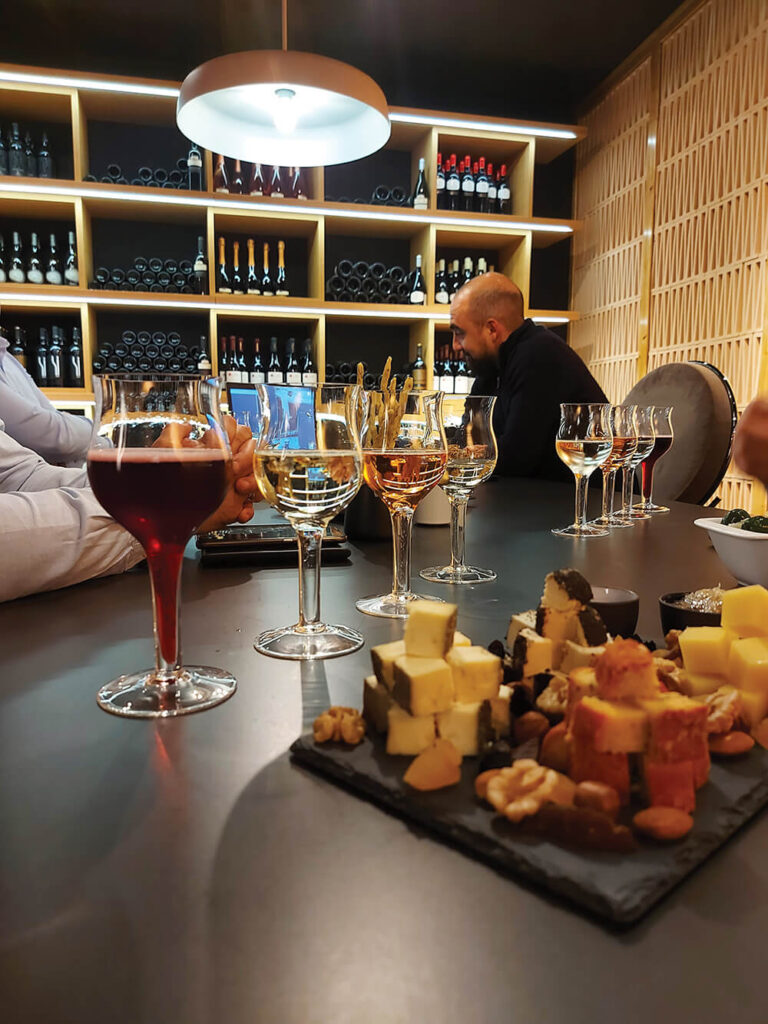
It’s hard to maintain the position on the market without experiments and innovative products. We have 15 small qvevri especially for experiments in our winery. We work hard and test and taste new wines each year. We experiment not only with technological processes but with vineyards as well. We planted Western varieties in Kakheti, for example, Aleksandrouli in Akhmeta. We revived an old wine variety – Kisturi. We also planted Tavkveri. We try to overcome the stereotype that varieties from Kakheti are unsuitable for sparkling wines and our Kisi is a great example of that. We also have several new products that we will soon announce. Starting from 2022, we will not only offer wine but other grape products to local and international markets.
Irma Chanturia: I’d like to see all companies in this field participate in raising consumer awareness and spreading the message that sparkling wine is not only a celebratory beverage; that this wine is great as an aperitif, as well as an everyday gastronomical product. In turn, the consumers will know more about the work that goes into each bottle, and the differences between sparkling and traditional wine. We might not be a traditional sparkling wine producer, such as France, but we have great varieties, great products, and a desire for quality. We need to work hard to make Georgian sparkling wines and Pet-Nats known to the world.
Giorgi Samanishvili: as producers, we also have to work hard with professional consumers in Georgia so that they can also spread the word about sparkling wine being an everyday product and not just a celebratory beverage.

